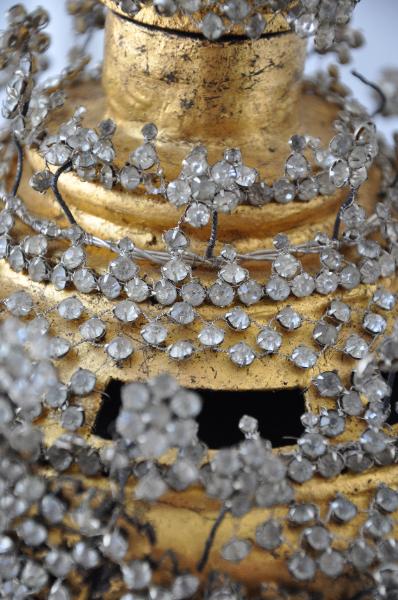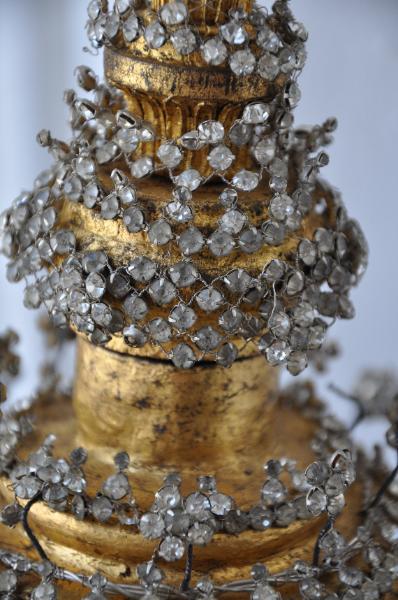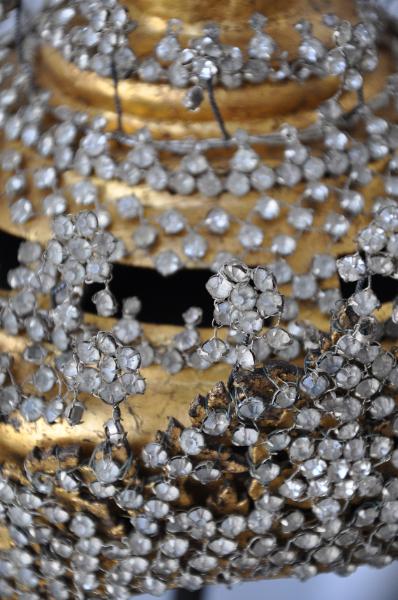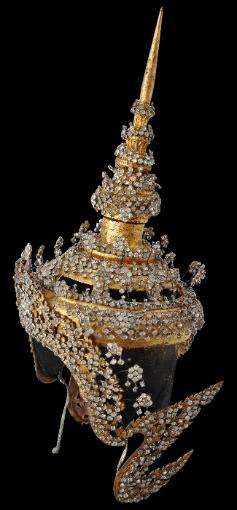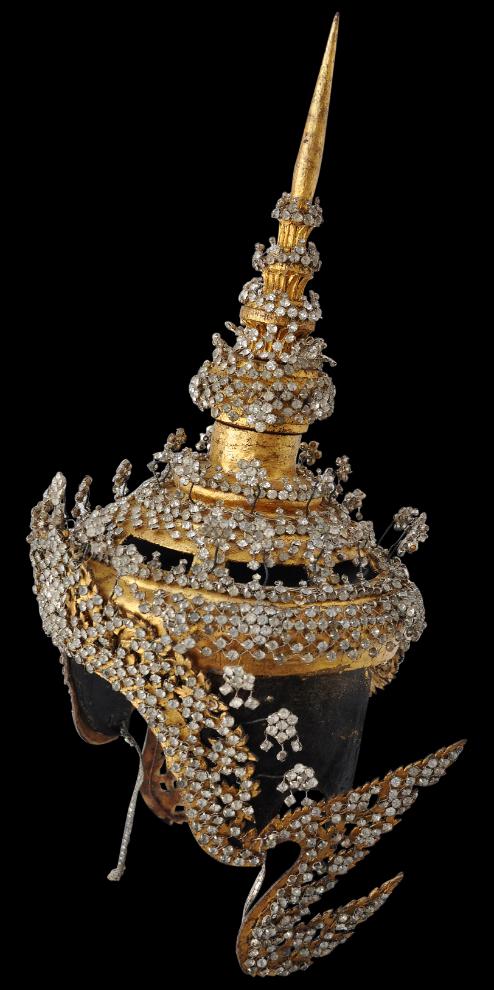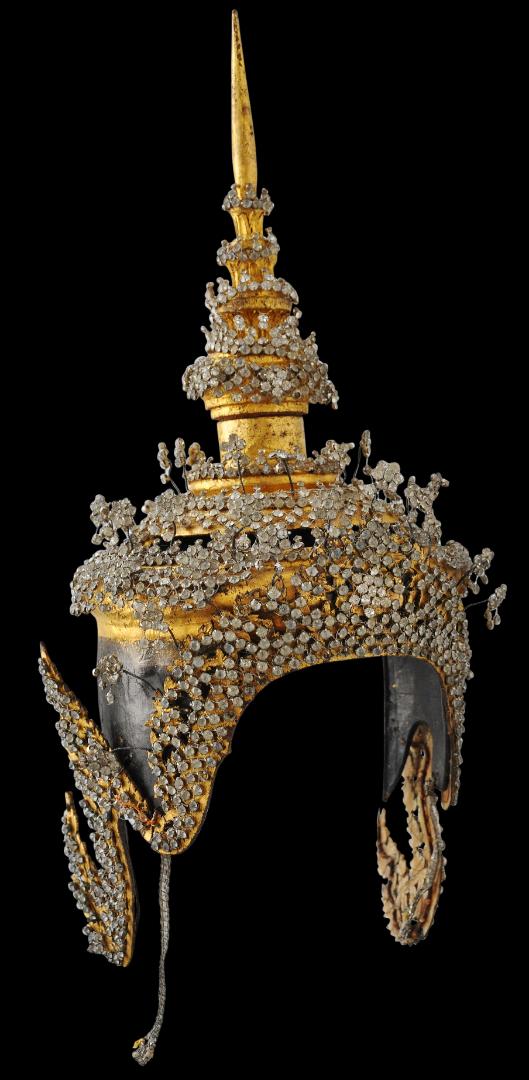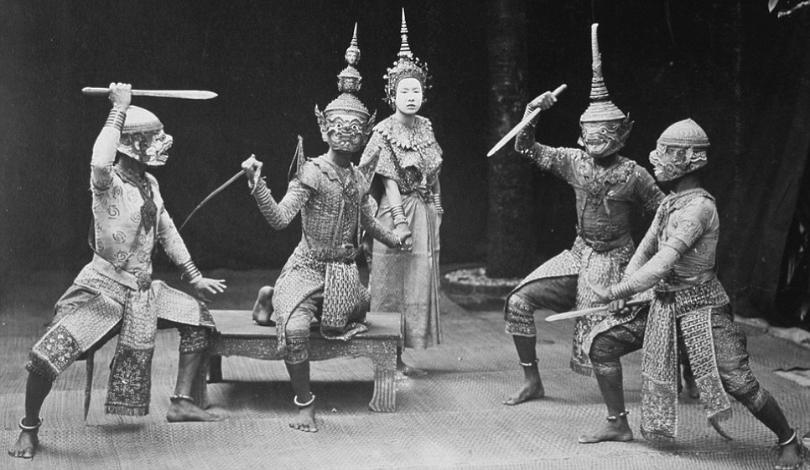
Dancer’s Headdress, Thailand or Cambodia
Glass, Gilt Lacquer & Silver Dancer’s Headdress for Sita
Thailand or Cambodia
circa 1920
height: 49cm
Dance dramas such as Thai versions of the Rama epic featuring Hanuman, king or the monkeys, Rama, and Sita, were very popular in the Kingdom of Siam in the 19th and early 20th centuries. Headdresses such as this particularly fine example were made for the dancer who played the key role of Sita. As heroine of the epic, she, like Rama, were attired regally with ornate costumes and spectacular crown-like headdresses. Lower ranking females such as princesses wore diadems rather than full crowns with tiered spires.
This headdress comprises gilded lacquer, black lacquer, wood, rawhide, faceted glass spangles, and silver. The glass spangles are mounted in
a jour silver settings, in complex bands of silver wire, and with many mounted in flower-like settings en tremble on wire stems so that the spangles shimmied and moved in a frenetic and over-exaggerated fashion with any minor movement made by the dancer. The silver settings are particularly fine.
The crown incorporates a diadem with gilded rawhide flanges or wings that frame the dancer’s face on either side and which are embellished with fine wire netting inset with dozens of silver-mounted glass spangles.
Before the dancers performed, it was traditional for them to place their headdresses, diadems, masks and musical instruments on an altar along with offerings to respected teachers and spirits. After the ceremony, the headdresses were put on and a small, single fresh flower was tucked behind the ear (McGill, 2009, p. 108).
Similar and possibly later examples from the Doris Duke collection are illustrated in McGill (2009, p. 108).
Similar examples were worn in Cambodia. This example might be from Cambodia but most probably is Thai in origin.
The example here is in very fine condition with few or no discernible losses. The gilding has fine wear consistent with age. The headdress comes with a custom-made stand which allows it to be attractively and securely displayed.
References:
Jeldres, J., & B. Dayde-Latham, Le Palais di Roi du Cambodge, Triad Publishing, 2002.
McGill, F. (ed.),
Emerald Cities: Arts of Siam and Burma, 1775-1950, Asian Art Museum, 2009.
Warren, W., & L. Invernizzi Tettoni,
Arts and Crafts of Thailand, Thames & Hudson, 1994.
Provenance
UK art market
Inventory no.: 1803
SOLD

Khon dancers in Bangkok, circa 1900. The dancer at the rear centre (Sita) wears a headdress similar to the example here.
